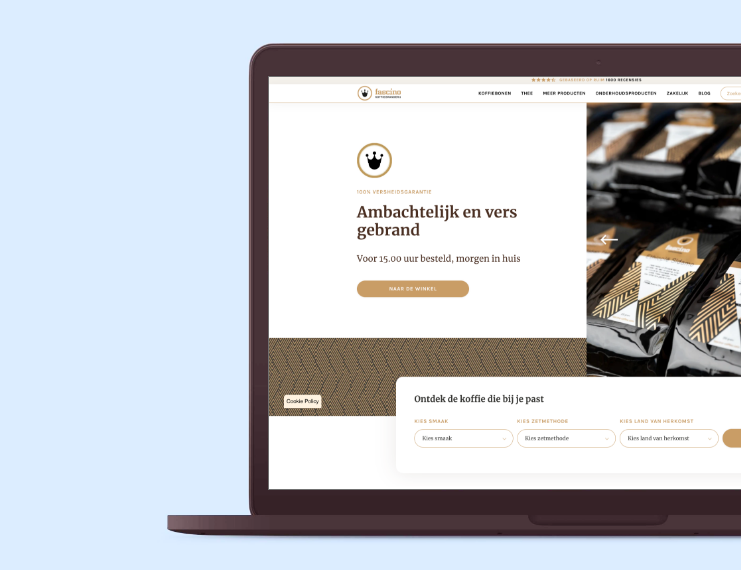The problem of the expensive customer
Many online businesses who started out quite successfully hit a wall at some point: they can’t seem to grow past a certain size. Along with any growth in revenue, there is a disproportionate growth in costs. Why is that?
It’s because of all the one-time customers.
Those new people you lured to your store with fancy ad campaigns turn out to be expensive. You paid quite a lot of money to get them to visit you, but once in your store they often buy something once and then never come back. What is more, a lot of them present you with extra costs by returning their order to you, or by contacting your customer service with an issue.
What does this look like in numbers? We’ll give you an example that shows you’re actually losing money over your one-time customers.
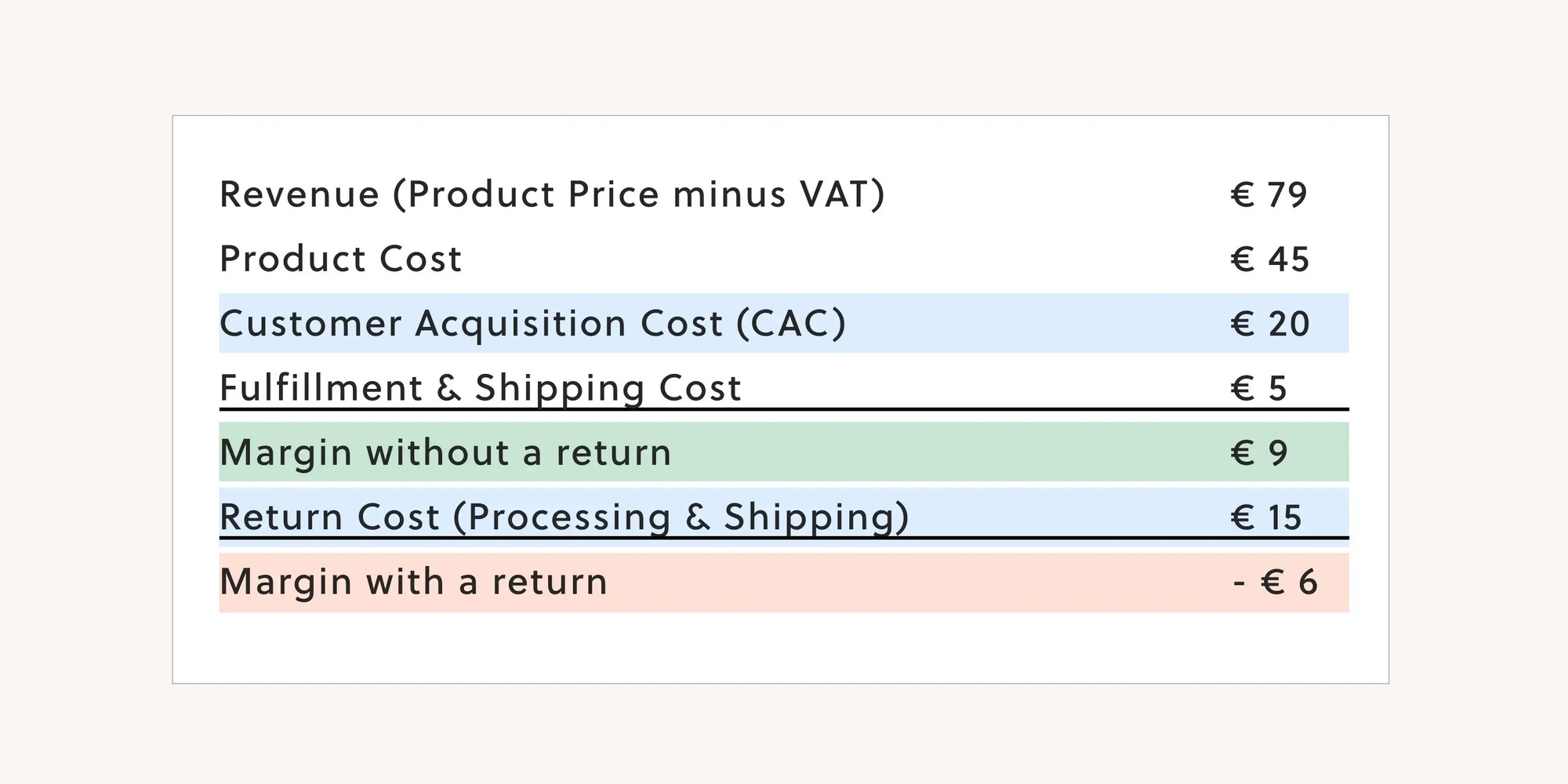
But it doesn’t stop there. After they leave, you will have to start looking for the next batch of new customers. So you start another ad campaign, and so the cycle continues. Even if you do get the expensive customer to come back at some later point, you usually do so at more cost. You will have to convince the customer all over again, through a retargeting campaign for instance.
All this is clearly a very poor return on investment. Want to know how poor? Have a look at your Churn Rate: the percentage of customers that doesn’t come back to your store after their first purchase. You can calculate your churn rate by dividing the number of churned customers by the total number of customers. The first-time vs returning customer data in your Shopify dashboard also shows the value of orders placed by first-time and returning customers.
Before you start freaking out over the result though, we’ll give you a benchmark to show you how many e-commerce businesses, like yours, struggle with expensive customers. If 80% of your customers are one-time buyers, you are doing no better or worse than most of your fellow entrepreneurs.
But what you need to be truly thriving is more like a 50/50 balance.
So if your store is currently around 80% or even higher than that, you have your next move cut out for you: finding out why people don’t stick around.
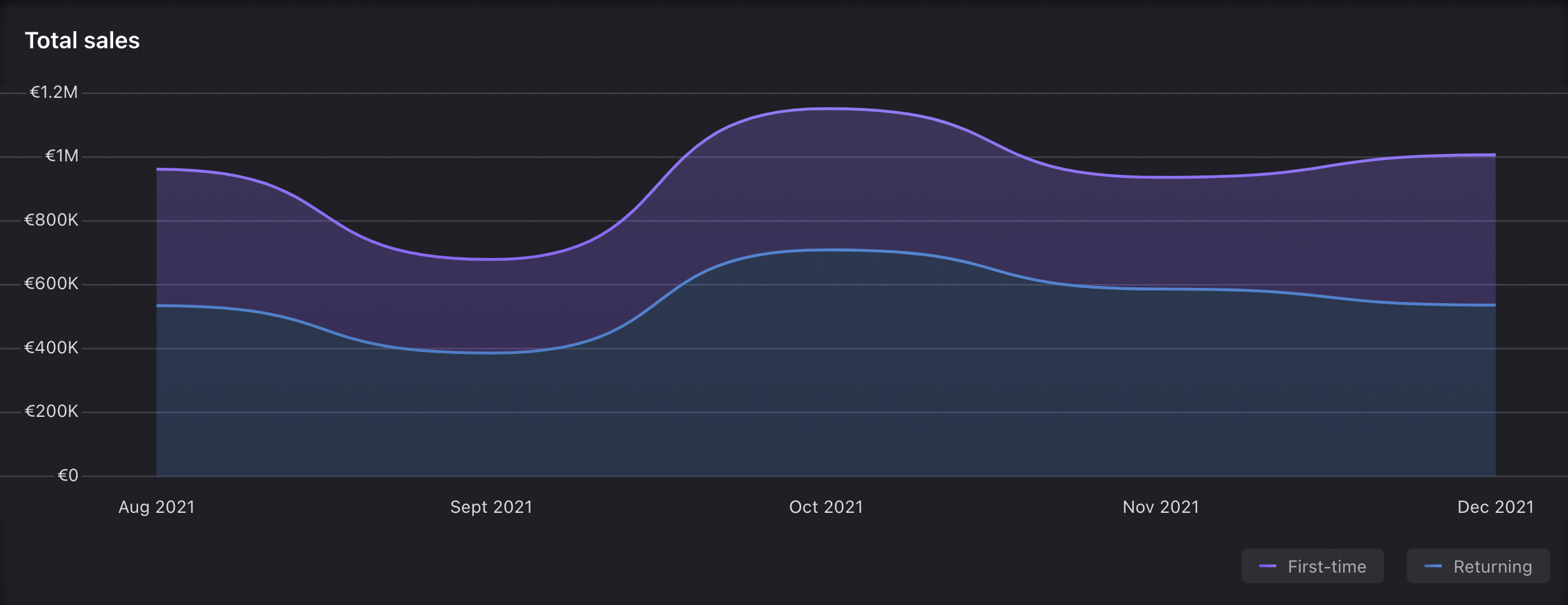
Why your customers don’t stick around
So how come your store attracts so many expensive, one-time customers? In some cases it’s because a store sells a super-niche product like triathlon wetsuits, personalized dog artworks or electrical guitars: products that people only need one of (unless you’re Keith Richards of course). But those stores usually make up for the extra costs of acquisition by keeping their product price high enough. In many, many more cases something else is going on though.
Many online stores show an astounding lack of interest in their customers
How well do you know your customers? How much time do you spend getting to know their needs, preferences and desires? Are you aware of the turnoffs and obstacles they run into when shopping in your online store? Are you collecting any data on your customers?
If not, that’s not good. You either got too obsessed by numbers and stats somewhere along the way, or you view your store as a means to get into your customers’ wallets and can’t be bothered to actually care about them.
You can easily spot the stores that don’t care. How? They don’t invest in a long-term relationship with their customers. There is hardly anything in place to expand their communication with customers after a purchase. Or before, for that matter.
That is a costly mistake. If your first encounter with the customer was successful, you should be flirting their pants off to make sure they will come back more often. Really woo them. Be a genuine charmer, and keep up the good work indefinitely. Customers are fickle: they can be picky because when you don’t deliver a first class experience, they can easily find other brands who will. Playing hard to get isn’t going to improve your numbers.
Why you really need your customers to stick around
So what is going to improve your numbers? As we said: building a lasting relationship with your customer! If you could get them to stay with you and buy your products frequently, you would have a steady and more or less predictable revenue stream. Plus: increasing profit margins, because whatever acquisition costs you spend on the customer will be offset by more revenue coming from that customer.
Remember the calculation we showed you before? With a returning customer it will look a lot better. More like this:
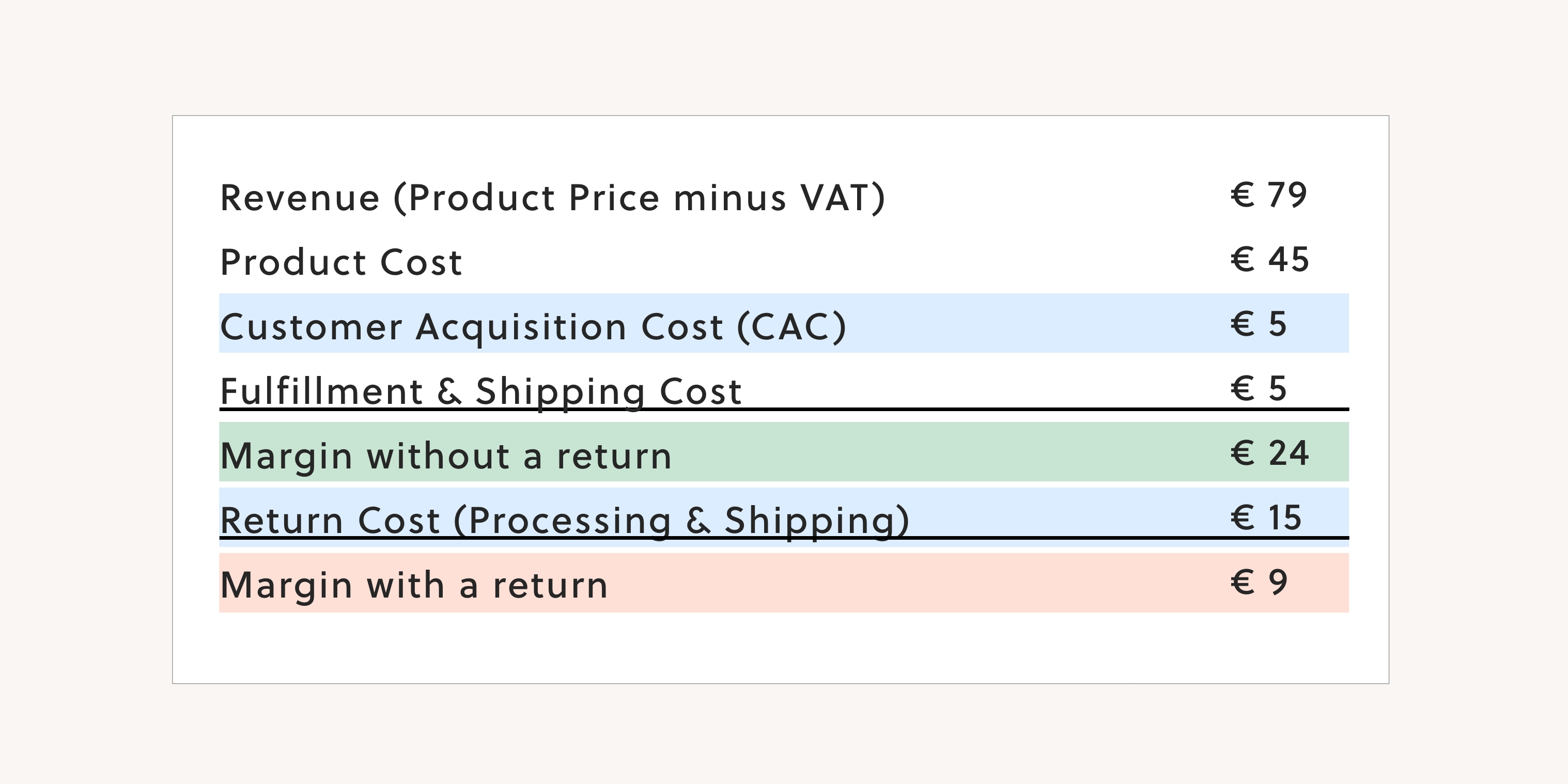
This right here is why a loyal customer base is such an enormous asset to any e-commerce brand. It is really the foundation for continuous growth and a healthy business: the more predictable your revenue stream, the higher your company’s net worth.
This holds true now more than ever. And it’s not just us saying this either. Last summer, Shopify introduced the term C2C to define the new dynamic in e-commerce: Connect to Consumer. Online advertising is expensive and increasingly ineffective. What’s more, the general public is getting woker by the day, and they don’t like being stalked and pixeled around the internet. Just as entrepreneurs start to dislike depending on ever-changing algorithms. It’s time to go back to basics: invest in real connections with your customers.
People and numbers - the art of customer retention
Getting your customers to stick with you is an art form. Especially when you’re in the e-commerce business, where customers rarely meet you in person and only get to see any products when they place an order in your webshop.
Volumes have been written about the art of customer retention, but at Code we have come to the conclusion that, ultimately, it’s a matter of mindset. Instead of getting wrapped up in numbers - and believe us, it is very easy to get wrapped up in numbers when you run an e-com business - you need to remind yourself of this:
Your business isn't about numbers - it's about people.
It’s about the people who like what you are doing - and who show their appreciation by regularly spending money on it. Bless their big hearts and wallets! Isn’t that simply amazing? Without those awesome people, your business would not exist and you certainly wouldn’t have any juicy numbers to obsess over. No revenue, no conversion rates, no profit margins, nothing.
You want to grow your brand? Start paying close attention to your customers. Really figure them out: what makes them tick, what do they like about your products or service, what do they need to keep their interest in your brand alive?
And then give it to them.
Incidentally, this is also where the numbers and the data come in: they tell you a lot about your customers. Stuff they don’t even know themselves. Like their preferred time to shop, how long they take to make a decision, their favourite colours and communication channels.
Most importantly, the numbers tell you how to turn a not yet particularly interested customer into a great customer. Because every e-commerce expert knows: great customers are made, not born. And if you play your numbers right, you could be the one making them.

The formula for e-commerce growth
So how do you play your numbers right? And which numbers are we talking about exactly? Let’s explain how it works using this simple formula:
Revenue = Frequency x Average Order Value x Customer Count (Traffic x Conversion Rate)
You might have seen this formula before (we didn’t come up with it, marketing legend Jay Abraham did). For those of you who need a little refresh: here’s a brief explanation. If your goal is to grow your revenue, you basically have four levers to achieve this:
- F - Frequency: how often your customers place an order
- AOV - Average Order Value: how much they spend per order
- T - Traffic: how many people visit your store
- CR - Conversion Rate: the percentage of visitors that actually buy something
Raising any of these five will lead to more revenue, but they are not all equally effective. As we have shown, focusing on more Traffic will not do your business much good in the long run, because generating good quality traffic is expensive these days. Also, you don’t want people to merely visit your store, you want them to engage: subscribe to your newsletter, follow you on insta, place an order.
That is where your Conversion Rate comes in. Conversion is a very, very big deal in e-commerce, and you can see why. How do you convert an online visitor into a customer? A fascinating topic that keeps millions of marketeers, growth hackers and e-commerce specialists occupied on a daily basis.
But don’t underestimate Frequency and Average Order Value! If you already have a customer base and manage to increase one or both of these numbers, you don’t need many customers because the few customers you have bring in the bulk of your revenue. Even without paying attention to conversion rate optimization, these two might improve your numbers considerably - with relatively little effort.
In short, the real multipliers in this story are Conversion Rate and Average Order Value, and the absolute hero is Frequency. If you manage to increase any of these three, your business will start growing exponentially. And the nice thing is: any optimisation you implement to grow one of them will very likely have an effect on the other two as well.
What is more, if you automate all the measures you take to increase Frequency, Average Order Value and Conversion Rate, they will have an effect not only on your current customers but on every future visitor. You will have made a structural improvement to your funnel that is going to get you better customers, and increase the net worth of your business.
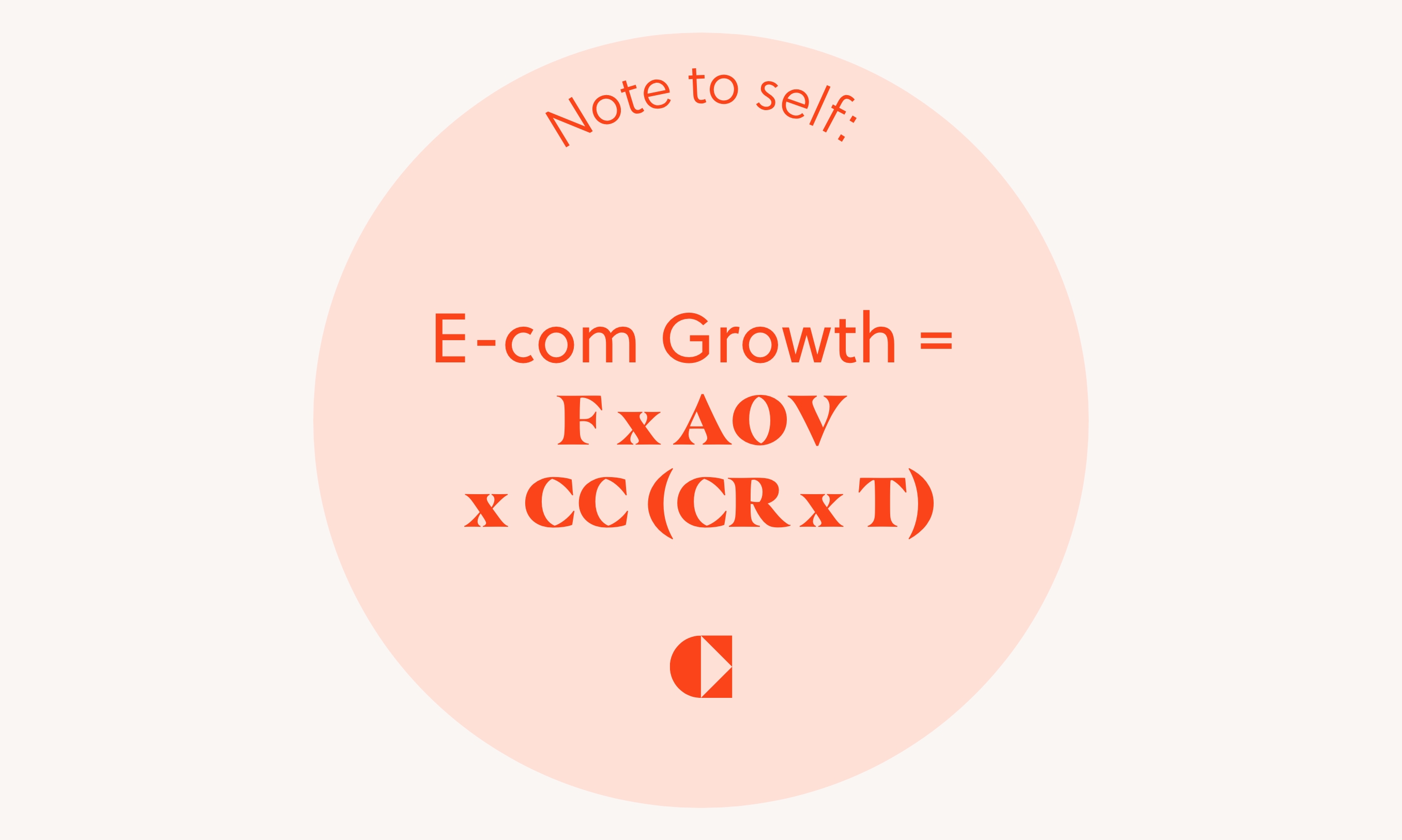
How to get started
Want to know how to improve your numbers? Start by changing your mindset. Don’t think “we’re improving the outcome of our formula”, think “we’re giving people an amazing experience and building an inspiring brand”. We’ll tell you all about it in these three blogs, all stuffed to the brim with actionable tips:
Feel like you could use some professional help switching from an acquisition- to a retention-mindset? Code can cook up an effective growth strategy with you and guide you during implementation. Read more about our 6-step E-Commerce Growth program here!




